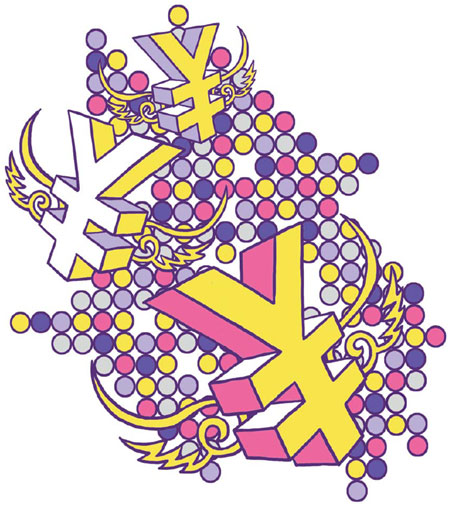
The currency is playing increasing role in global economy but there is long way to go before full convertibility
Making the yuan into a fully convertible, internationalized currency has been talked about in China and around the world for more than two decades.
China is forecast to overtake the United States to become the world's largest economy within 20 years. Already, China has a dominant influence on the global economy, and the yuan has become one of the world's strongest currencies, appreciating more than 30 percent against the US dollar since July 2005.
It seems appropriate that the yuan should play a major world role, alongside the dollar and the euro. The benefits for China are obvious: cheaper borrowing on world markets, the profits gained from the issuance worldwide of a widely used valuable paper currency and a reduced foreign exchange risk both for Chinese companies and for the management of China's dollar reserves.
But for a long time these benefits were outweighed by the apparent disadvantages of a fully convertible yuan: the loss of capital control and of the Chinese government's ability to intervene to assist uncompetitive Chinese exporters. It is only since the 2008 US financial crash that the Chinese government has come to believe that the risks posed by internationalizing the yuan are smaller than the risks of continuing to rely on the US dollar as the dominant global currency used for trade, a unit of account and a store of value.
As a result of this change of view at the highest level of the Chinese government, China's 12th Five-Year Plan (2011-15) includes as an objective the internationalization of the yuan. The world's traders, currency speculators and central bankers are closely watching how quickly this highly important development might occur.
It is easy to forget that in 1993 the government made a similar commitment to a fully convertible currency, and even set a time limit of 2000 by which it was to happen. But the Asian crisis of 1997 intervened, and the yuan liberalization program was shelved.
Although China has grown greatly in importance as a force in world markets since the 1990s, it is still not certain that the more recent commitment to yuan convertibility will be stuck to, because unforeseen events can get in the way.
But the events of the last year or so seem to indicate that the government is determined to meet its stated objective of a fully internationalized currency. At the beginning of 2012, Zhou Xiaochuan, governor of the People's Bank of China, the central bank, declared "we are now not too far from our goal of capital account convertibility".
According to SWIFT, one of the major global financial settlement and payment platforms, since 2010 the yuan has jumped up the ranking of world currencies used to settle financial transactions, from 35th in October 2010, to join the South African rand and the Danish kroner at 16th two years later.
China is continuing to drive the process. In March 2012, all licensed Chinese importers and exporters were allowed to settle their trade accounts in the yuan, providing a saving of 5 percent, according to a recent survey by Deutsche Bank.
